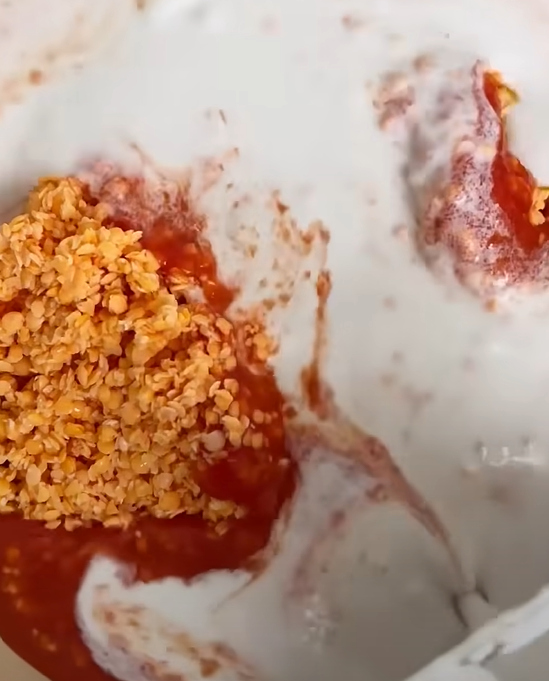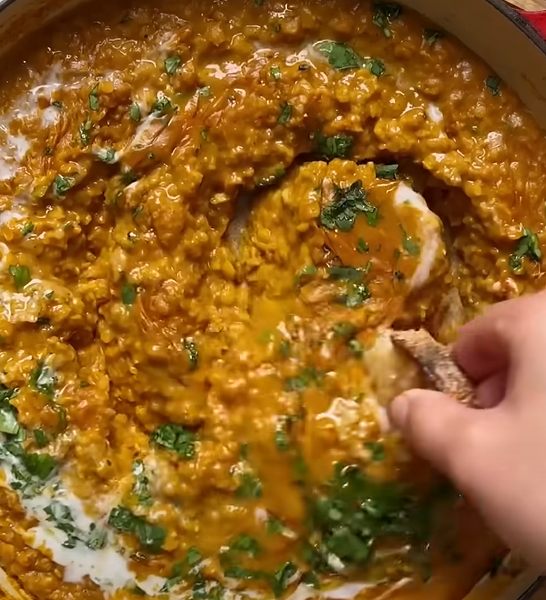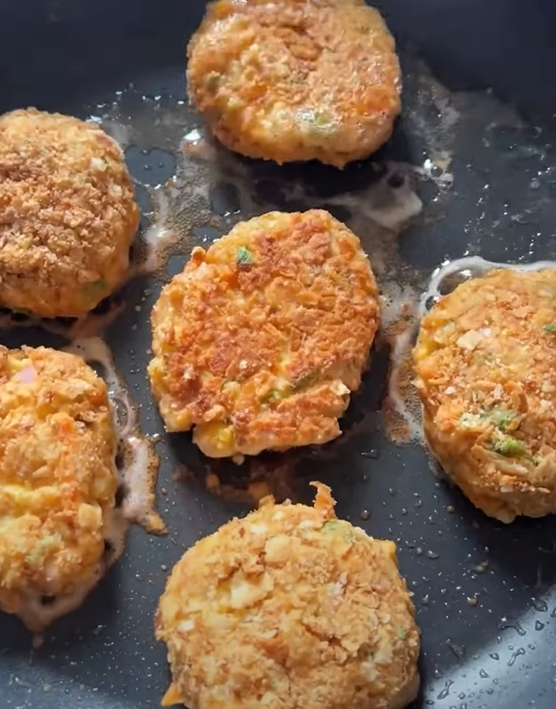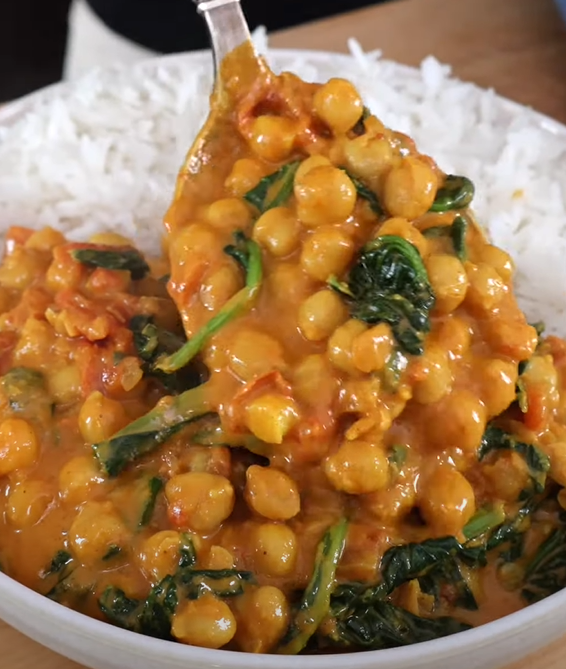I still remember the first time I tasted authentic Madras lentils at a small Indian restaurant tucked away in a bustling street corner. The rich, creamy texture combined with complex spices created an explosion of flavors that left me craving more. That moment sparked my journey into mastering this incredible dish, and today I’m excited to share everything I’ve learned about creating the perfect Madras lentils in your own kitchen.
Madras lentils, also known as Dal Makhani in Hindi, represent one of India’s most beloved comfort foods. This dish originates from the Punjab region but has become synonymous with North Indian cuisine worldwide. The name “Madras” often refers to the spice blend used, though the dish itself has evolved into countless regional variations.
What Makes Madras Lentils Special
Dal Makhani: The Hindi name literally translates to “buttery lentils,” highlighting the rich, creamy nature of this dish.
Urad Dal: Black gram lentils form the base of this recipe, providing protein and a distinctive earthy flavor.
Rajma: Kidney beans add texture and additional protein, making this a complete nutritional powerhouse.
Tadka: The tempering technique where spices are heated in oil to release their essential oils and flavors.
Makhani: Refers to the butter and cream that give this dish its signature richness.
The beauty of Madras lentils lies in their versatility and nutritional density. Unlike many lentil dishes that can feel light or watery, this preparation creates a hearty, satisfying meal that stands alone as a main course or complements other Indian dishes perfectly.
Essential Ingredients for Authentic Madras Lentils
Creating authentic Madras lentils requires specific ingredients that work together to build layers of flavor. I’ve spent years perfecting my ingredient list, and I can tell you that quality matters significantly in the final result.
Primary Lentils and Beans
| Ingredient | Quantity | Purpose | Substitution Options |
|---|---|---|---|
| Whole black urad dal | 1 cup | Primary lentil base | Split black urad dal (adjust cooking time) |
| Red kidney beans (rajma) | 1/2 cup | Texture and protein | Pinto beans or black beans |
| Black gram (whole) | 2 tablespoons | Authentic flavor | Can omit if unavailable |
Aromatic Spice Blend
| Spice | Quantity | Flavor Profile | Quality Tips |
|---|---|---|---|
| Cumin seeds | 1 teaspoon | Earthy, warm | Toast lightly for enhanced flavor |
| Coriander seeds | 1 tablespoon | Citrusy, sweet | Grind fresh for best results |
| Garam masala | 2 teaspoons | Complex, warming | Make your own blend when possible |
| Turmeric powder | 1 teaspoon | Earthy, slightly bitter | Use fresh turmeric root if available |
| Red chili powder | 1-2 teaspoons | Heat level | Adjust to taste preference |
| Asafoetida (hing) | 1/4 teaspoon | Umami depth | Essential for authentic flavor |
Fresh Aromatics and Base
The foundation of great Madras lentils starts with fresh aromatics. I always use fresh ginger-garlic paste rather than store-bought versions because the flavor difference is remarkable. Fresh tomatoes provide acidity that balances the richness, while onions create the sweet base that ties everything together.
Step-by-Step Cooking Method
My approach to Madras lentils involves three distinct phases: preparation, cooking, and finishing. Each phase requires attention to detail, but the process itself is quite forgiving once you understand the basics.
Phase 1: Preparation and Soaking
Proper preparation sets the foundation for success. I always soak my lentils and beans overnight, which reduces cooking time significantly and improves digestibility. The soaking water should be discarded before cooking, as it can contain compounds that make beans harder to digest.
Soaking Process:
- Rinse urad dal and kidney beans separately under cold running water
- Soak in separate bowls with plenty of water (beans expand considerably)
- Add a pinch of salt to each bowl to help soften the legumes
- Cover and let sit for 8-12 hours at room temperature
- Drain and rinse thoroughly before cooking
Phase 2: Cooking the Lentils
The cooking phase requires patience and attention. I prefer using a pressure cooker for the initial cooking, as it ensures the lentils become perfectly tender. However, stovetop cooking works equally well with longer cooking times.
Pressure Cooker Method:
- Combine drained lentils and beans in the pressure cooker
- Add 4 cups of water and 1 teaspoon of salt
- Cook on high pressure for 25-30 minutes
- Allow natural pressure release for best texture
- Check tenderness – lentils should mash easily between fingers
Stovetop Method:
- Use a heavy-bottomed pot with tight-fitting lid
- Maintain gentle simmer throughout cooking process
- Stir occasionally to prevent sticking
- Cooking time: 60-90 minutes depending on lentil age
- Add hot water as needed to maintain consistency
Phase 3: Creating the Masala Base
While the lentils cook, I prepare the masala base that will transform simple cooked legumes into restaurant-quality Madras lentils. This aromatic foundation requires careful timing and temperature control to achieve the proper depth of flavor.

Masala Preparation Steps:
- Heat 3 tablespoons ghee or oil in a heavy-bottomed pan
- Add cumin seeds and let them splutter for 30 seconds
- Incorporate finely chopped onions and cook until golden brown
- Add ginger-garlic paste and cook until fragrant (2-3 minutes)
- Stir in tomato puree and cook until oil separates from mixture
- Add all dry spices and cook for 1-2 minutes to bloom flavors
- Pour in a splash of water if mixture becomes too dry
Nutritional Profile and Health Benefits
Madras lentils provide exceptional nutritional value, making them an excellent choice for health-conscious cooks. The combination of lentils and beans creates a complete protein profile, while the spices offer numerous health benefits.
Macronutrient Breakdown (Per Serving)
| Nutrient | Amount | Daily Value % | Health Benefits |
|---|---|---|---|
| Protein | 18-22g | 35-40% | Muscle maintenance, satiety |
| Fiber | 12-15g | 45-55% | Digestive health, blood sugar control |
| Iron | 4-6mg | 25-35% | Oxygen transport, energy production |
| Folate | 180-220mcg | 45-55% | Cell division, DNA synthesis |
| Potassium | 600-800mg | 15-20% | Heart health, blood pressure regulation |
| Magnesium | 120-150mg | 30-40% | Bone health, muscle function |
The high fiber content in Madras lentils promotes digestive health and helps maintain stable blood sugar levels. The protein quality rivals that of meat, making this dish excellent for vegetarians and vegans seeking complete nutrition.
Spice-Specific Health Benefits
Each spice in Madras lentils contributes unique health properties. Turmeric provides powerful anti-inflammatory compounds, while cumin aids digestion and may help regulate blood sugar. Garam masala contains multiple spices that work synergistically to support overall health.
Advanced Cooking Techniques and Tips
Through years of experimentation, I’ve discovered several techniques that elevate Madras lentils from good to extraordinary. These methods require minimal additional effort but create significant improvements in flavor and texture.
Slow Cooking for Superior Texture
Traditional Madras lentils benefit from long, slow cooking that allows flavors to meld completely. After combining the cooked lentils with the masala base, I simmer the mixture on low heat for at least 45 minutes, stirring occasionally to prevent sticking.
Slow Cooking Benefits:
- Develops deeper, more complex flavors
- Creates silky, restaurant-quality texture
- Allows spices to penetrate lentils completely
- Reduces need for artificial thickeners
Cream and Butter Integration
The timing of cream and butter addition significantly impacts the final dish. I add these rich elements in stages rather than all at once, which prevents curdling and ensures smooth integration.
Cream Addition Technique:
- Temper cream by adding small amounts of hot dal mixture
- Gradually incorporate tempered cream back into the pot
- Add butter in small pieces while stirring continuously
- Maintain low heat during cream integration
Serving Suggestions and Pairings
Madras lentils pair beautifully with various accompaniments, creating complete, satisfying meals. I’ve experimented with numerous combinations over the years and have developed strong preferences based on flavor compatibility and nutritional balance.
Traditional Indian Breads
| Bread Type | Flavor Profile | Texture Match | Serving Notes |
|---|---|---|---|
| Naan | Slightly sweet, pillowy | Perfect for scooping | Garlic naan complements spices |
| Roti/Chapati | Neutral, wholesome | Sturdy for wrapping | Healthier whole wheat option |
| Paratha | Rich, flaky | Absorbs dal well | Especially good with stuffed varieties |
| Kulcha | Soft, slightly tangy | Light and airy | Amritsari kulcha is traditional |
Rice Varieties and Preparations
Rice serves as an excellent neutral base that allows the complex flavors of Madras lentils to shine. I prefer basmati rice for its aromatic qualities and separate grains that don’t compete with the dal’s richness.
Rice Preparation Tips:
- Rinse basmati rice until water runs clear
- Soak for 30 minutes before cooking for longer grains
- Use 1.5:1 water-to-rice ratio for perfect texture
- Add a bay leaf and cardamom pod for subtle fragrance
- Let rest for 5 minutes after cooking before fluffing
Fresh Accompaniments
Fresh elements provide necessary contrast to the rich, heavy nature of Madras lentils. I always serve pickled onions, fresh cilantro, and lime wedges alongside the main dish.
Essential Fresh Elements:
- Thinly sliced red onions in lime juice and salt
- Fresh cilantro leaves for brightness
- Lime or lemon wedges for acidity
- Sliced green chilies for heat lovers
- Plain yogurt for cooling contrast
Regional Variations and Adaptations
Madras lentils have evolved differently across various regions of India and internationally. Understanding these variations helps home cooks adapt the recipe to their preferences and available ingredients.
Punjab-Style Dal Makhani
The original Punjabi version emphasizes richness and uses minimal tomatoes. This preparation relies heavily on butter, cream, and long cooking times to achieve its characteristic black color and velvety texture.
Key Characteristics:
- Darker color from longer cooking
- Higher butter and cream content
- Minimal use of tomatoes
- Emphasis on whole spices
- Traditional clay pot cooking (when possible)
Restaurant-Style Adaptations
Commercial restaurants often modify traditional recipes to reduce cooking time and costs while maintaining customer appeal. These adaptations can work well for home cooks seeking convenience.
Common Restaurant Modifications:
- Addition of cashew paste for creaminess
- Use of tomato puree instead of fresh tomatoes
- Incorporation of food coloring for consistent appearance
- Higher proportion of kidney beans to reduce cost
- Pressure cooking throughout the process
Storage and Meal Preparation
Madras lentils improve with time, making them excellent for meal preparation and batch cooking. I often make large batches and store portions for quick weeknight dinners.
Proper Storage Techniques
| Storage Method | Duration | Quality Notes | Reheating Instructions |
|---|---|---|---|
| Refrigerator | 5-7 days | Thickens when cold | Add liquid when reheating |
| Freezer | 3-4 months | May separate slightly | Thaw overnight, stir well |
| Portion containers | 3-4 days | Convenient single servings | Microwave with splash of water |
Storage Tips:
- Cool completely before refrigerating
- Store in airtight containers to prevent flavor absorption
- Leave space for expansion when freezing
- Label containers with date and contents
- Freeze in portion-sized containers for convenience
Meal Prep Strategies
I’ve developed efficient meal prep strategies that allow busy home cooks to enjoy homemade Madras lentils throughout the week. The key lies in understanding which components can be prepared in advance.
Advance Preparation Options:
- Soak lentils and beans up to 2 days ahead
- Prepare masala base and refrigerate for 3 days
- Cook lentils completely and freeze for 1 month
- Chop aromatics and store in refrigerator
- Pre-measure spice blends in small containers
Q&A Section
Q: Why do my Madras lentils turn out watery instead of creamy?
The most common cause of watery lentils is insufficient cooking time or inadequate mashing. I always cook my lentils until they’re completely tender, then mash about 1/3 of the mixture against the pot sides to create natural thickness. Additionally, allowing the dal to simmer uncovered for the final 15-20 minutes helps reduce excess liquid.
Q: Can I make Madras lentils without a pressure cooker?
Absolutely! I’ve made excellent Madras lentils using only stovetop methods. The key is patience – allow 90-120 minutes for proper cooking and check liquid levels regularly. Soaking the lentils overnight becomes even more critical when using stovetop methods, as it significantly reduces cooking time.
Q: How can I reduce the richness without losing flavor?
I often create lighter versions by substituting half the cream with cashew paste or using Greek yogurt instead of heavy cream. You can also reduce the butter content and add more aromatic spices to maintain complexity. Coconut milk works beautifully as a dairy-free alternative that still provides richness.
Q: What’s causing my lentils to stick to the bottom of the pot?
Sticking usually indicates too high heat or insufficient liquid. I always cook Madras lentils on medium-low heat and stir every 10-15 minutes. Using a heavy-bottomed pot distributes heat more evenly and reduces hot spots that cause sticking.
Q: Can I prepare Madras lentils in a slow cooker?
Yes, though the technique differs slightly. I soak the lentils overnight, then combine all ingredients except cream and butter in the slow cooker. Cook on low for 6-8 hours, then stir in cream and butter during the final 30 minutes. The texture will be slightly different but equally delicious.
Q: How do I fix oversalted Madras lentils?
I’ve rescued oversalted batches by adding peeled, diced potatoes during the final 20 minutes of cooking – they absorb excess salt remarkably well. Remove the potatoes before serving. Alternatively, adding a small amount of cream or a splash of lemon juice can help balance excessive saltiness.
Q: Why don’t my spices taste as vibrant as restaurant versions?
Fresh spice grinding makes an enormous difference in flavor intensity. I recommend buying whole spices and grinding them yourself, or at least ensuring your ground spices are less than six months old. Also, properly blooming spices in hot oil releases their essential oils and creates deeper flavor.
Q: Can I substitute different types of lentils?
While black urad dal provides the most authentic flavor and texture, you can substitute with split black gram or even combine different lentil varieties. However, cooking times will vary significantly, so adjust accordingly. Red lentils cook much faster and create a different texture profile.
Mastering Madras lentils takes practice, but the results are incredibly rewarding. This dish represents comfort food at its finest – rich, satisfying, and deeply nourishing. I encourage you to experiment with the techniques and adaptations I’ve shared, making this recipe your own through personal touches and preferences.
The beauty of Madras lentils lies not just in their complex flavors, but in their ability to bring people together around the dinner table. Whether you’re cooking for family, friends, or meal prepping for busy weeks ahead, this dish delivers consistent satisfaction and nutritional value that few other recipes can match.



